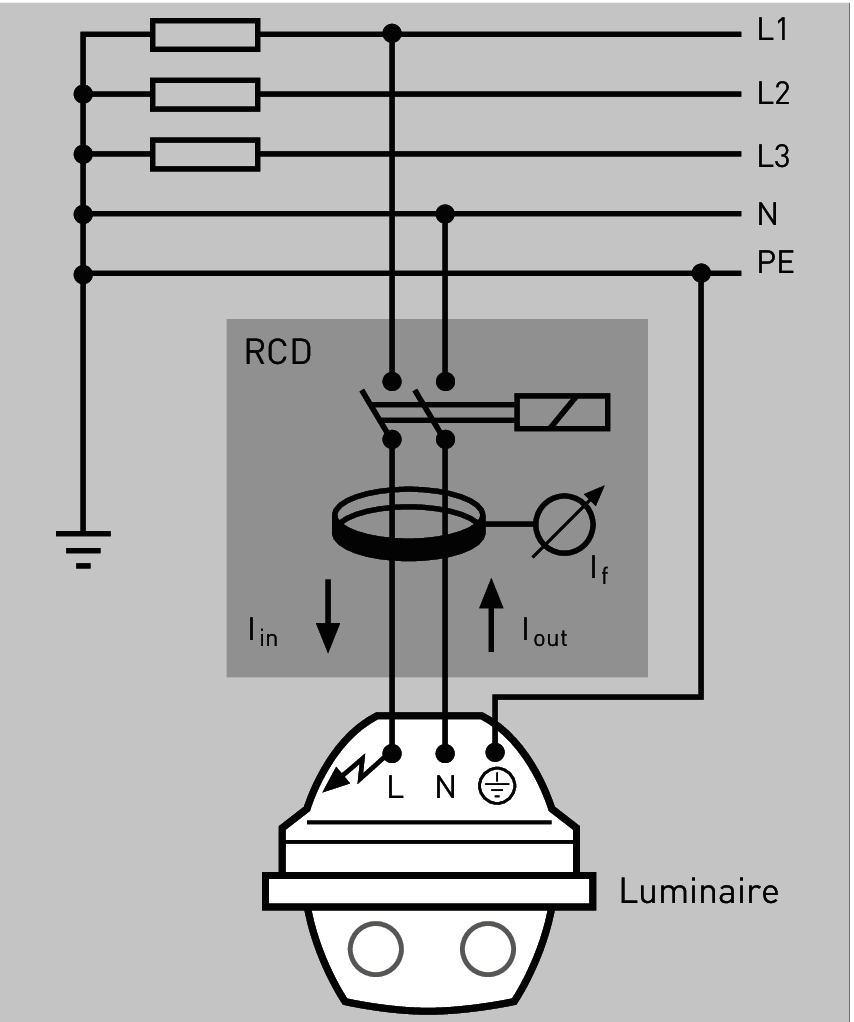Electrical installations and electrical devices must provide sufficient protection against electric shock (direct contact with live components) for people and animals. This protection can be achieved by means of
covers or claddings;
obstructions (e.g. barriers) and distance;
additional protective devices e.g. fault-current circuit breakers (see also chapter );
insulation of active (live) components; and
operation with safety extra-low voltage that is harmless in case of contact.

